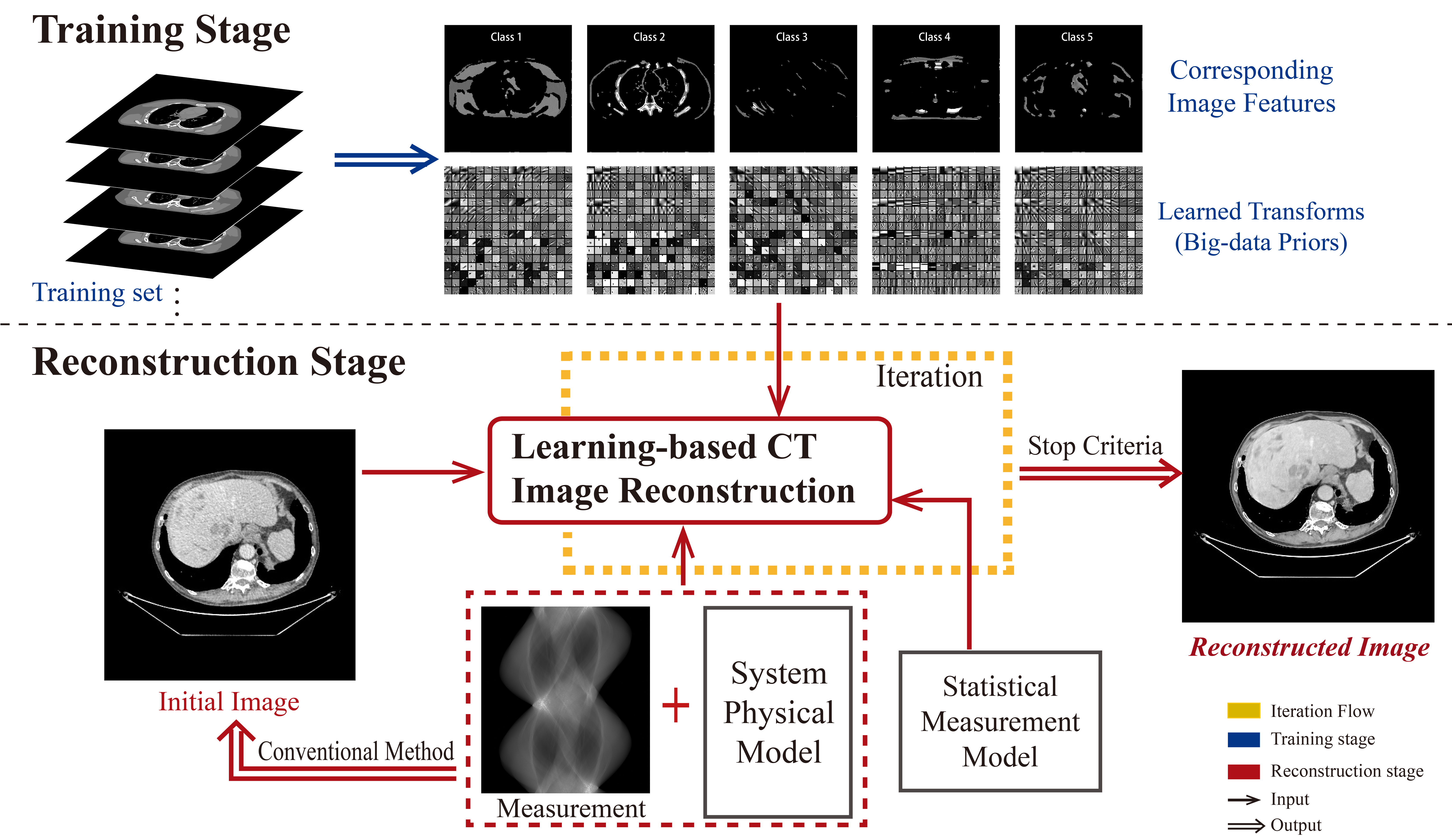PWLS-ULTRA: An Efficient Clustering and Learning-Based Approach for Low-Dose 3D CT Image Reconstruction
The development of computed tomography (CT) image reconstruction methods that significantly reduce patient radiation exposure while maintaining high image quality is an important area of research in low-dose CT (LDCT) imaging. We propose a new penalized weighted least squares (PWLS) reconstruction method that exploits regularization based on an efficient Union of Learned TRAnsforms (PWLS-ULTRA). The union of square transforms is pre-learned from numerous image patches extracted from a dataset of CT images or volumes. The proposed PWLS-based cost function is optimized by alternating between a CT image reconstruction step, and a sparse coding and clustering step. The CT image reconstruction step is accelerated by a relaxed linearized augmented Lagrangian method with ordered-subsets that reduces the number of forward and back projections. Simulations with 2-D and 3-D axial CT scans of the extended cardiac-torso phantom and 3D helical chest and abdomen scans show that for both normal-dose and low-dose levels, the proposed method significantly improves the quality of reconstructed images compared to PWLS reconstruction with a nonadaptive edge-preserving regularizer (PWLS-EP). PWLS with regularization based on a union of learned transforms leads to better image reconstructions than using a single learned square transform. We also incorporate patch-based weights in PWLS-ULTRA that enhance image quality and help improve image resolution uniformity. The proposed approach achieves comparable or better image quality compared to learned overcomplete synthesis dictionaries, but importantly, is much faster (computationally more efficient).
PDF Abstract


